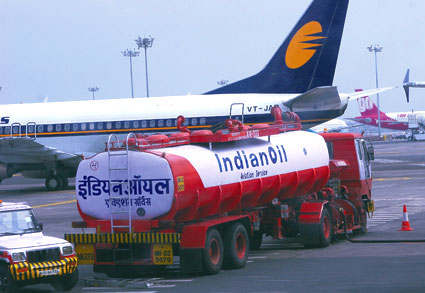Economy - In The Doldrums
Civil aviation is a contributory dynamic of the national economy. Unfortunately, it does not appear that the government—and especially the Ministry of Civil Aviation—appear to share this perception.

In November 2009, Minister of Civil Aviation Praful Patel told an expectant Parliamentary Consultative Committee that domestic aviation in India was expected to grow at 9 to 10 per cent in the next decade and that the domestic passenger base would grow from its present figure of 87 million annually to around 150 to 180 million by 2020. Currently, India has the fourth largest domestic passenger market globally after the US, China and Japan, and the minister’s projection was heartening.
After a boom period in 2007-2008, the aviation industry had descended into gloom during the following year, when the cumulative losses of India’s airlines toted up to Rs 8,557 crore. This figure is expected to swell to over Rs 9,000 crore this financial year. The projection for the next financial year is a much cheerier one with the most optimistic view projecting overall profits. If that were to happen, the airlines would be ecstatic. However, history would be witness to the fact that this turnaround came without assistance from the Indian government or the Ministry of Civil Aviation (MoCA). Indeed, the state of civil aviation in India is rather deplorable in as much as the regulatory and facilitative machinery of the government appear to be quite apathetic to the bleeding cuts and festering sores afflicting the airline industry over the last few months.
Escalating Losses
Let us take a brief look at the mess airlines have got themselves into. Before the second opening of the Indian skies around half a decade ago, the average air fares were around double of what they are today. During the same period, fuel prices rose substantially, crude having touched the $147 (Rs 6,830) mark before settling down to the current $70 (Rs 3,250). Aviation fuel prices (with some assistance from the inordinately high taxation policy in aviation fuel) have hammered airlines’ bottom lines into bottom-less curves. All other costs related to operating airlines have gone up following expected inflation curves. However, and herein lies the painful part, air fares have fallen.
Overcapacity and fierce competition have depressed fares to abysmal levels—in the form of promotional fares or otherwise—so that yields represent red balance sheets for airlines. There was a remote possibility that, given the small number of airlines in India, there could have been a move towards cartelisation to artificially sustain fares at higher levels. However, fortunately for the air traveller, unity amongst the airlines has been non-existent. The Federation of Indian Airlines has been a paper tiger with no concrete results to show in vindication of its formation and continued existence. The one occasion when it got together its constituent member airlines to unite and organised a nation-wide strike, it exposed the noncohesive nature of its structure when the strike fell through on account of one and then in quick succession, the other members pulling out of the strike. What started off as a roar, petered out into a whimper, rendering any such future initiatives stillborn.
State Apathy
Returning to the government’s role, the long list of complaints from the airlines has been discussed at great length in previous issues of this journal and it is adequate to mention that the most critical ones are high taxes on Aviation Turbine Fuel (ATF), the need to accord ATF ‘declared goods’ status, the lopsided cross subsidy impinging on ATF pricing policy, rationalisation of fees being charged by private airports and so on.
So far as pricing of ATF is concerned, the MoCA shields itself behind the convenient alibi that sales tax is a state subject. As such the central government, including the MoCA, has no say in the state policies on taxation of ATF. The disparity in the tax levels amongst the states is vast, varying from finding it hard to even manage the existing ones with delays threatening to become the rule rather than exception. Vehicle lanes on the airside, a highly safety sensitive area with high severity of consequence in case of mishaps, are almost as crowded as busy city roads.
Air traffic in some of the Indian airports is worse than vehicular traffic; the absence of modern stateof-the-art air space management equipment continues to make delays unavoidable. This is so because the existing equipment requires separation between two consecutive landing aircraft to be eight to nine nautical miles while equipment being used in Europe and American airports permits this gap to be reduced to at least half of that figure. The reason, it may be highlighted here, is not that modern equipment is not available in the market, nor even that it is unaffordable, but just that there appears to be inadequate will on the part of the government to push through the installation of such equipment all this while. Now it is expected that a few of the airports will get the required new equipment by sometime next year.





